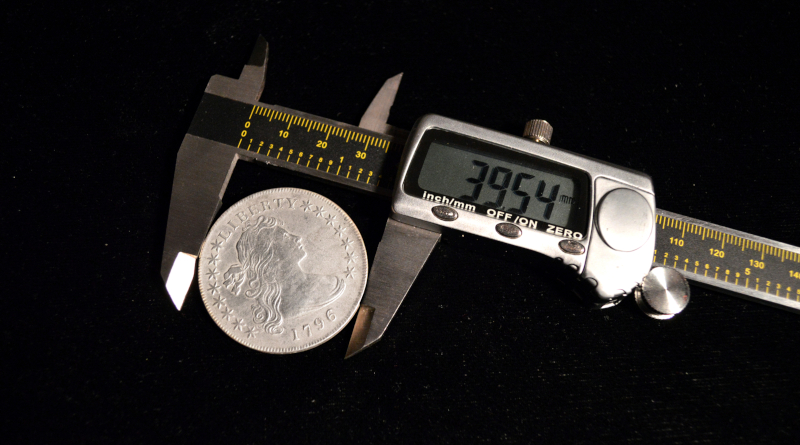Coin Collecting 103: Protecting, Preserving & Storing Your Coin Collection
We spend countless hours assembling our coin collections. Protecting, preserving, and storing your coins correctly will ensure future generations will enjoy them.
Coin Collecting Supplies for The Beginner
Anybody starting on their coin collecting journey will need a guide. The most popular guide for the new collector is the "A Guide Book of United States Coins," also known as the "Red Book." This book was first published in 1947 and comes out annually. It has everything a new coin collector needs to know to start their coin-collecting journey successfully. You can also use online resources such as the Greysheet's CPG Price Guide .
Secondly, you should purchase a soft pad or use a cloth to protect your coins while working with them. It's not a matter of "if"; it's a matter of "when" you drop a coin. When you do, it will land on a soft surface and not get damaged. Additionally, it will keep the coin from coming in contact with a tabletop or countertop that may have some dirt or contaminants. Additionally, it would help if you washed your pad or soft cloth regularly to keep it clean.
Lastly, you should purchase a good magnifying glass and light. Coin collectors enjoy looking at their coins in a good environment, and purchasing the proper tools will help you maximize your enjoyment of your collection. There are two choices when it comes to magnifiers. The first is a magnifying glass that is usually 2 to 4 inches in diameter and has a magnifying power of 2 to 3 times. This glass can be held at a distance to inspect your coins. The second is a magnifying loupe which can be used for high magnification. Usually, a ten-power loupe is ideal for examining your coins closely.
Coin Holders, Folders & Albums
Next, you should house your coins in a way that will allow you to enjoy your collection while protecting it simultaneously. There are three popular ways to house your coins in your collection.
Cardboard 2 x 2
The first is cardboard 2" x 2" holders with clear windows. You place the coin in the center, fold the holder, and then staple it shut to hold the coin. Be sure to use a flat clinch stapler so that the staples will not scratch other coins if they slide across them.
Advantages :
- Most economical way to store and protect coins
- Easy to use and stack neatly.
Disadvantages :
- Easily damaged or bent if not stored properly
- Provides minimal protection from the elements
· Coins can be easily scratched when handled without care

2" x 2" cardboard coin holders
Coin Folders
These cardboard folders have holes punched in them to insert the coins. The most popular brand is Whitman and Harrison folders. Whitman is plain blue folders, while Harrison folders have decorative covers. Inside, each hole will be labeled with a date and some information on the coin that gets inserted into the hole. This will quickly give you an idea of how to complete your collection and what coins are still required. Unfortunately, only one side of the coin is visible because a paper backing keeps the coin from falling out of the folder.
Advantages :
- Easy to store and organize coins.
· Easy to keep track of the number of coins in each folder.
- Easy to find and identify coins.
Disadvantages :
· Coins can become loose and fall out of the folders.
· Difficult to display coins in an attractive manner.
Coin Albums
Coin albums work very similarly. The most popular brand of coin album comes from the Dansco company. These binder-like albums have cardboard pages on the inside with holes. What differentiates these from folders is that there are clear plastic sliders that are slid back for you to insert the coin. This way, both sides of the coin are visible for inspection.
Advantages :
- Easy to display coins in an attractive manner.
- Easy to store, organize and identify coins.
- Easy to store in a safe place.
Disadvantages :
- Coins can be difficult to remove from the album.
· Coins can become scratched or damaged if not stored properly.
- Not ideal for storing large numbers of coins.
Safely Storing Your Collection
Some of the most significant coin collections have been passed down from generation to generation. However, we are only just stewards of these miniature works of art that we love to collect. Therefore we must safely store a coin collection to protect it from damage and theft.
Here are the top six enemies of your coin collection that can lead to irreparable damage to your coins:
1. Improper Handling - When you handle your coins, be sure you only touch the coins by the edges. Using cloth or latex gloves is an even better way to handle your coins. This will prevent the oils and the acids in your skin from damaging your coins.
2. Humidity - Some metals, like gold, do not react with water. Unfortunately, other metals, such as silver, copper, and brass, will react with water, leading to discoloration and possibly damaging your coins.
3. Heat and Cold - Very high heat or icy environments will damage your coins. Therefore do not store your coins in an attic or the basement.
4. Acids - Acid is used to manufacture a variety of products. The most common use is in the manufacture of paper. Make sure you buy coin-collecting supplies that are made out of acid-free paper.
5. Chlorine/PVC - Some plastics are made using polyvinyl chloride. Over time this breaks down into an acid that can leave a gooey green substance on copper and copper-clad coins.
6. Air Pollution - Air pollution can contain a variety of substances. From acids to petroleum products to soot. If you live in an urban area, you should take precautions to store your collection away from open windows.
As described above, you should store your collection in a folder, album, or 2 x 2 holders. Unfortunately, if you put your collection in a location that has a harsh environment, it may become damaged. Therefore, choose the location carefully, such as a safe deposit box in the bank, a burglar and fire rated home safe, or a metal cabinet or metal bookshelf. Also, avoid storing your coin collection on wooden shelves, which may emit harsh chemicals.
Cataloging Your Coin Collection
Finally, you cannot carry your coin collection everywhere, nor should you. However, you need to know which coins you have so you can acquire the coins you need. A genuine coin collector sets a goal and then starts purchasing coins to fulfill that goal. cataloging your collection separates a "coin collector" from a "coin accumulator." You can then carry catalogs to coin shows and coin dealers to ensure that you do not buy duplicate coins.
A second benefit of cataloging your collection is guaranteeing that your heirs know your collection's value. Without this, your estate may only receive pennies on the dollar for your valuable collection. Also, it will simplify the tax implications when you die.
There are many options for cataloging your collection. Some collectors start with a notebook and a list of coins they want to collect. When they purchase a coin, they record the date, price, and dealer from where they bought the coin. You can also use a spreadsheet such as Microsoft Excel or Google Sheets to make an electronic ledger of your coins. Finally, there are software packages and apps that automate the cataloging of your collection.

Download the Greysheet app for access to pricing, news, events and your subscriptions.
Subscribe Now.

Subscribe to CPG® Coin & Currency Market Review for the industry's most respected pricing and to read more articles just like this.
Author: James M Bucki












Please sign in or register to leave a comment.
Your identity will be restricted to first name/last initial, or a user ID you create.
Comment
Comments